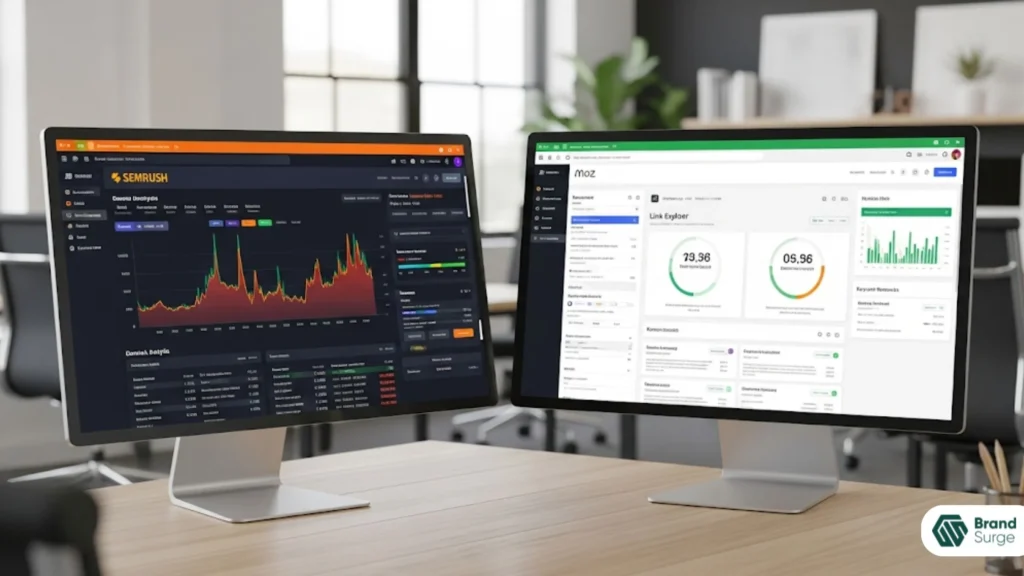If your HVAC website isn’t ranking on Google, you’re missing out on high-quality leads. An understanding of SEO audit for HVAC businesses helps you identify issues, improve rankings, and increase visibility.
Without a proper audit, your website could suffer from slow loading speeds, weak content, or poor local SEO implementation, all of which impact your bottom line. Let’s break down how to conduct a thorough SEO audit for your HVAC business.
Let’s break it down step by step.
What Are the Key Steps in an HVAC SEO Audit?

1. Analyze Your Website’s Technical SEO
First of all, you should identify any speed issues, loading issues and other technical aspects of your website. Users don’t like to wait for a website to load in minutes. You just have micro seconds to impress your users.
How Fast is Your HVAC Website Loading?
Page speed is a ranking factor, and if your website takes more than three seconds to load, potential customers will likely leave.
Quick Win: Use Google PageSpeed Insights to identify slow-loading elements. Optimize images, enable browser caching, and minimize JavaScript to improve speed. A fast-loading site enhances user experience and improves search rankings.
Is Your HVAC Website Mobile-Friendly?
More than 60% of Google searches come from mobile devices, meaning your website must be optimized for smartphones and tablets.
Pro Tip: Use Google’s Mobile-Friendly Test to check how well your website performs on different devices. Ensure responsive design, avoid intrusive pop-ups, and keep buttons large enough for easy tapping.
Are There Any Crawlability or Indexing Issues?
If Google can’t crawl and index your website properly, your pages won’t appear in search results. Use Google Search Console to detect crawling errors. Submit an XML sitemap, fix broken links, and ensure your robots.txt file isn’t blocking important pages.
Are There Broken Links on Your Website?
Broken links can frustrate users and negatively impact SEO by signaling a poorly maintained website. Use tools like Screaming Frog to find and fix broken links. Replace them with relevant, working links to maintain a seamless user experience.
Is Your Website Secure with HTTPS?
Google gives ranking preference to secure websites. Ensure your website has an SSL certificate installed. Secure sites not only rank better but also build trust with visitors.
2. Optimize On-Page SEO for HVAC Keywords
If your On Page is not optimized for HVAC keywords, you will not get the desired traffic. It’s important to focus on the relevant keywords that attract the traffic you need. You can incorporate those keywords strategically into your content then.
Do Your HVAC Pages Have Proper Title Tags & Meta Descriptions?
Your title tag should include the primary keyword and be under 60 characters. Meta descriptions should be engaging and include a call-to-action. Keep meta descriptions under 160 characters and use persuasive language to increase click-through rates.
Are Headings Structured Properly?
Headings (H1, H2, H3) improve readability and help search engines understand content structure. Your H1 should clearly describe the page’s purpose and include the primary keyword. Use subheadings (H2, H3) to break up content and improve readability.
Is Your Content Optimized for HVAC Keywords?
Your content should naturally include HVAC-related keywords and variations. Use tools like SurferSEO or Clearscope to ensure proper keyword density and placement without keyword stuffing.
Does Your Content Include Internal & External Links?
Internal linking enhances SEO by connecting relevant pages. Link to service pages, blog posts, and industry authority sites to improve credibility and SEO.
Are HVAC Service Pages Well-Structured?
Your service pages should provide value, including FAQs, pricing, and service areas. For example, SEO services page for Brand Surge provide value by adding customer reviews.
A well-structured service page should include detailed descriptions, pricing (if applicable), service areas, and customer testimonials.
Bonus: Implement structured data markup to help search engines understand your service pages and improve local SEO.
3. Evaluate Off-Page SEO & Backlink Profile
Next, you need to evaluate the off page SEO and backlinks profile. In this section, you should be primarily concerned with how many relevant websites are mentionaing you in their blogs and website content. Are these backlinks worthy or not? This will help you make and improve your off page SEO strategy.
How Strong is Your HVAC Website’s Backlink Profile?
Backlinks from high-authority sites improve credibility and rankings. Use Ahrefs or SEMrush to analyze backlinks. Disavow low-quality links and build high-quality citations and guest posts.
Are You Leveraging Local SEO for HVAC Rankings?
Google Business Profile (GBP) optimization is key for HVAC businesses targeting local customers. Keep NAP (Name, Address, Phone Number) consistent across your website and directories like Yelp, Angi, and HomeAdvisor.
Is Your HVAC Business Listed in Online Directories?
Being listed in local directories helps with local SEO rankings. Focus on high-authority directories relevant to HVAC services. Optimize descriptions with service keywords.
Are You Generating Customer Reviews?
Positive reviews improve credibility and increase local SEO rankings. Encourage happy customers to leave Google reviews and respond to all reviews professionally.
4. Assess HVAC Website User Experience (UX)
User experience provides greater value to users coming to your website. If your website is user-friendly and easy to navigate, users will be coming back to you. If not, they will probably look for someone who has a better website than yours.
Is Your Website Easy to Navigate?
A seamless UX improves conversion rates. A cluttered website leads to higher bounce rates and lower conversions. Use heatmaps from Hotjar to identify confusing navigation areas and improve usability.
Are Call-to-Action (CTA) Buttons Clear & Visible?
CTAs should be prominent, compelling, and drive conversions. Test different CTA button colors and placements to optimize for higher engagement.
Is Your Contact Information Easily Accessible?
Make it simple for customers to reach out. Your phone number and contact forms should be easy to find. Add a click-to-call button and live chat to improve lead generation.
5. Compare Your HVAC SEO Metrics with Competitors
A comparison can highlight gaps in your SEO strategy. Use a comparison table to identify strengths and weaknesses in your SEO strategy.
| SEO Factor | Your HVAC Website | Top Competitor |
| Page Speed | 0.25 | 0.17 |
| Domain Rating | 25 | 38 |
| Backlinks | 954 | 780 |
| Local Listings | 5 | 12 |
Pro Tip: Use SEMrush or Moz to analyze competitor SEO and adjust your strategy accordingly.
6. Content Marketing & Blogging Strategy
Finally, managing social media profiles of your business on Instagram, Twitter and Facebook is great. It will generate more traffic and users to your business and you will get more engagement. Remeber, you must answer the following questions to kepp yourself updated with content marketing and blogging strategy.
Are You Publishing Regular Blog Content?
A blog can drive organic traffic and position you as an industry expert. Publish HVAC maintenance tips, troubleshooting guides, and seasonal advice. Answer queries that users might get while reading your content online.
Do You Use Video Content?
Videos boost engagement and SEO rankings. Create short explainer videos on HVAC topics and embed them on your site. Make them interesting and add engaging content. Do not bore your users with long videos.
What Should You Do After Completing an SEO Audit?

Once you’ve audited your site, prioritize fixing critical issues first:
- Optimize technical SEO (speed, mobile-friendliness, indexing).
- Improve on-page SEO (title tags, content, internal linking).
- Strengthen off-page SEO (backlinks, local citations).
- Enhance user experience (navigation, CTAs).
- Develop a content strategy (blogging, videos, FAQs).
Quick Win: Schedule monthly SEO audits to stay ahead of competitors.
Final Thoughts
An SEO audit is an essential step in ensuring your HVAC business stays competitive in the digital space. By improving technical performance, optimizing content, and strengthening off-page SEO, you can enhance your search rankings and attract more potential customers. Regular audits will help you stay ahead of the competition and adapt to search engine updates. If you need expert assistance with your HVAC SEO strategy, consider partnering with Brand Surge for data-driven digital marketing solutions.
FAQs on HVAC SEO Audits
1. How Often Should I Conduct an HVAC SEO Audit?
Conduct an SEO audit every 3-6 months to keep your website optimized.
2. What Tools Are Best for an HVAC SEO Audit?
Use Google Search Console, Ahrefs, SEMrush, and Screaming Frog for a comprehensive audit.
3. Can an SEO Audit Improve My HVAC Leads?
Yes! A well-optimized site attracts more visitors, increasing lead generation.
4. What Are Common SEO Mistakes HVAC Websites Make?
Ignoring local SEO, slow loading speeds, and missing meta descriptions are major mistakes.
5. How Long Does It Take to See Results After an SEO Audit?
SEO improvements can take 3-6 months, depending on your strategy and competition.



